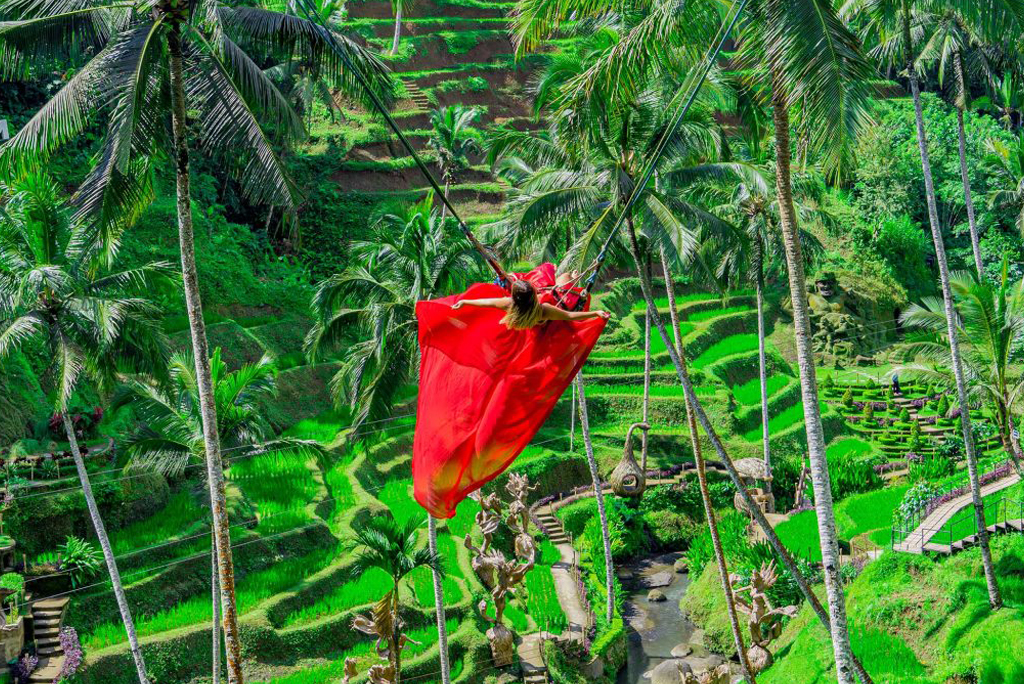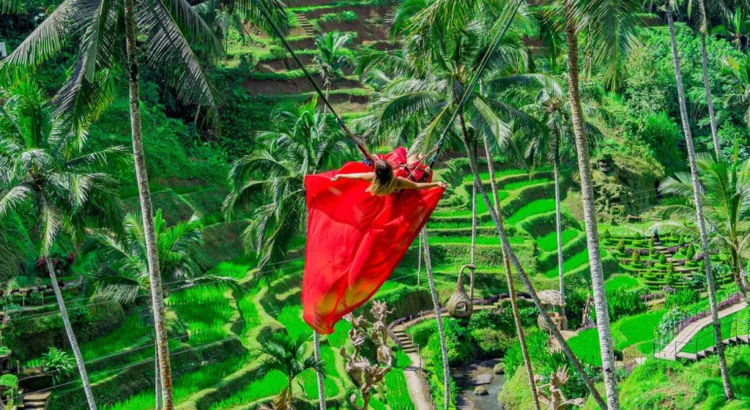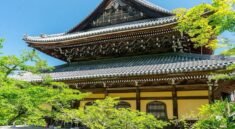
Tucked away in the heart of Bali’s lush interior lies a town that pulses with creativity, spirituality, and the gentle rhythm of nature. Unlike the beach-bound resorts of Seminyak or the surf culture of Canggu, Ubud offers a very different kind of magic. It is a place where mist drifts through emerald rice fields, where the chants of monks rise with the morning sun, and where artisans shape beauty with their hands and hearts. Welcome to Ubud, the spiritual and artistic soul of Bali, surrounded by jungle, terraced paddies, and a palpable sense of peace.
Ubud: The Beating Heart of Bali’s Culture
While many come to Bali seeking beaches, the true essence of the island lies inland. Ubud, whose name is derived from the Balinese word ubad meaning medicine, has long been associated with healing and inner wellness. Today, that reputation endures. It’s a place where yoga mats outnumber surfboards, where artists outnumber partygoers, and where tradition and nature shape every experience.
At the center of Ubud’s charm is its unique fusion of spirituality, artistry, and nature. The town itself is surrounded by dramatic landscapes—dense jungle, gushing rivers, and the iconic rice terraces of Tegalalang and Campuhan. But more than its scenery, Ubud is a state of mind—a commitment to living slowly, soulfully, and creatively.
Spirituality in Every Stone and Ceremony
Spirituality is not a separate practice in Ubud—it is interwoven into daily life. Every morning, you will see Balinese women in sarongs placing tiny canang sari offerings—delicate palm-leaf baskets filled with flowers, rice, and incense—at temples, altars, and even on motorbikes. These are humble expressions of gratitude to the gods, and they dot every corner of the town.
- Visit the Saraswati Temple, dedicated to the goddess of wisdom and the arts. It sits behind a lotus pond and exudes tranquility, especially during sunset.
- At Pura Gunung Kawi, just outside of Ubud, you’ll descend hundreds of stone steps into a temple carved into the cliffside—ancient, mossy, and untouched by time.
- The Holy Spring Water Temple of Tirta Empul, near Ubud, offers visitors the chance to participate in a traditional purification ritual in sacred pools fed by natural springs.
Yoga and meditation are modern expressions of this spiritual essence. Ubud is home to some of Southeast Asia’s most renowned yoga retreats—The Yoga Barn, Radiantly Alive, and Intuitive Flow, to name a few. From Vinyasa to Kundalini, classes are offered throughout the day in open-air pavilions that echo with birdsong and temple bells.
Whether you’re chanting with a spiritual teacher or quietly walking through a temple garden, the spiritual pull of Ubud is unmistakable.
A Living Canvas of Art and Craft
Ubud is more than serene—it’s vibrantly creative. For centuries, it has been the artistic heart of Bali, a place where painters, woodcarvers, dancers, and musicians thrive. Art is not just made here—it’s lived.
- Visit the Agung Rai Museum of Art (ARMA) or the Neka Art Museum to explore traditional Balinese paintings as well as contemporary masterpieces.
- Wander through Pengosekan Village, where entire families create detailed batik textiles, silver jewelry, and ceremonial masks.
- Ubud’s many galleries, from Gaya Art Space to Threads of Life, showcase everything from abstract sculpture to ethical weaving traditions, linking indigenous knowledge to the modern world.
But art isn’t confined to museums. Attend a Kecak fire dance performance in the courtyard of Ubud Palace, where dozens of men chant in sync as dancers in gilded costumes reenact scenes from the Hindu epic Ramayana. Or simply walk through Ubud Market, where even the mundane—fruits, baskets, sarongs—becomes a celebration of design and color.
Ubud’s artists don’t just preserve culture—they keep it alive and evolving.
Rice Terraces: Nature’s Green Architecture
The rice terraces that surround Ubud are more than photogenic backdrops—they are masterpieces of ecological harmony and engineering. These stepped fields, especially the famous Tegalalang Rice Terraces, are part of an ancient irrigation system known as subak, developed in the 9th century. More than just agriculture, subak is a spiritual cooperative that recognizes the connection between humans, water, and the divine.
Walking along the narrow trails between the paddies, especially early in the morning when the mist clings to the valley, is an experience that grounds and humbles. Farmers move through the fields in rhythmic motion, their silhouettes against the rising sun forming poetry in motion.
Many locals invite visitors to join in planting or harvesting rice, offering a deeper appreciation of how land and livelihood are intimately connected in Balinese life.
A Jungle That Breathes With Life
Beyond the terraces lie lush rainforests, home to waterfalls, sacred rivers, and monkeys swinging through towering banyan trees. Ubud’s jungle is not wild in the sense of danger—it’s a living temple, alive with spirit and song.
- Hike the Campuhan Ridge Walk, a gentle trail that leads you through palm-lined ridges with panoramic views of jungle valleys.
- Visit Tegenungan Waterfall or Tibumana Waterfall, both a short drive from town, where you can swim in clear, sacred waters surrounded by vines and basalt cliffs.
- Explore Monkey Forest Sanctuary, a protected grove where long-tailed macaques roam among ancient statues and mossy temples.
The air in Ubud’s jungle is thick with the scent of frangipani, the hum of insects, and the rustle of sacred trees. It’s easy to believe the stories locals tell about forest spirits and guardian deities that protect the land.
A Center for Conscious Living
What makes Ubud so unique isn’t just its natural beauty or spiritual depth—it’s the community it attracts. Over the past few decades, Ubud has become a haven for global travelers seeking not just a vacation, but a transformation.
You’ll find retreats focused on everything from sound healing and plant medicine to conscious entrepreneurship and sustainable farming. Cafés serve raw vegan cuisine and Ayurvedic teas; workshops on Balinese cooking, herbalism, or shadow puppetry are always a few steps away.
The town has also become a hub for eco-conscious living:
- Bamboo architecture thrives, with structures like the Green School and Bambu Indah offering models for sustainable design.
- Farmers’ markets feature organic produce, handmade crafts, and natural beauty products.
- Locals and expats alike gather for community cleanups, permaculture workshops, and moonlit meditation sessions.
In Ubud, lifestyle is a form of art and intention.
Hospitality Rooted in Heart
Staying in Ubud is not about five-star opulence (though it certainly exists), but about feeling welcomed like family. Whether you stay in a jungle villa, a bamboo treehouse, or a humble homestay overlooking a rice field, the essence of Balinese hospitality is universal: warm smiles, offerings at your doorstep, and the gentle rhythm of life lived in tune with nature.
Morning begins with birdsong and ends with fireflies. Midday might be spent in a hammock, at a temple ceremony, or painting in a workshop with a local artist.
Every moment feels intentional—and gently guided by the unseen rhythms of the island.
A Place That Transforms
What draws people to Ubud isn’t just its scenery—it’s the feeling that you are being invited into something sacred. Many come for a week and stay for months. Writers finish novels here. Couples marry under banyan trees. Solo travelers rediscover themselves in yoga halls and silent retreats. Artists find their voices. Healers find their gifts.
And when you leave Ubud, you take something with you—a quieter mind, a fuller heart, and perhaps, a new sense of who you are.
Final Thoughts: Ubud, The Soul of Bali
Ubud is more than a destination—it’s a sanctuary for the senses and the soul. It’s where creativity flows as freely as the rivers, where temples hide behind every tree, and where spirituality is not a performance but a way of life. It is a town where art is prayer, food is ritual, and nature is worshipped—not as an escape, but as a guide.
In this spiritual and artistic hub, surrounded by rice terraces and jungle, time slows down. Life deepens. And for a moment—or maybe forever—you feel like you’ve come home to a part of yourself you forgot existed.
If you are seeking not just a place to visit, but a place to connect, Ubud awaits you.




